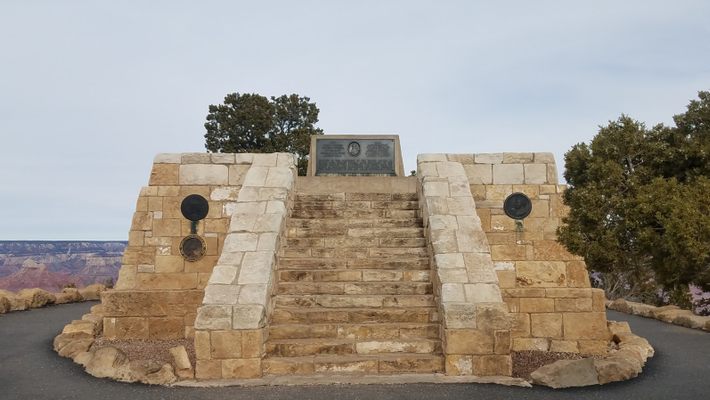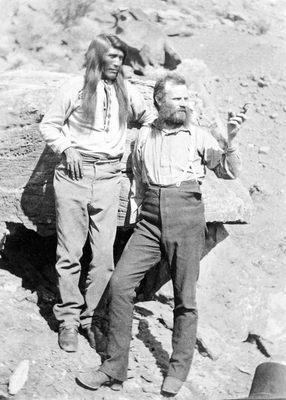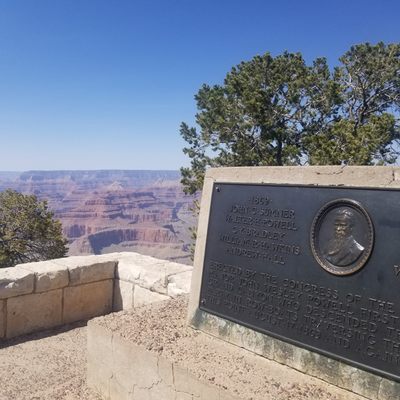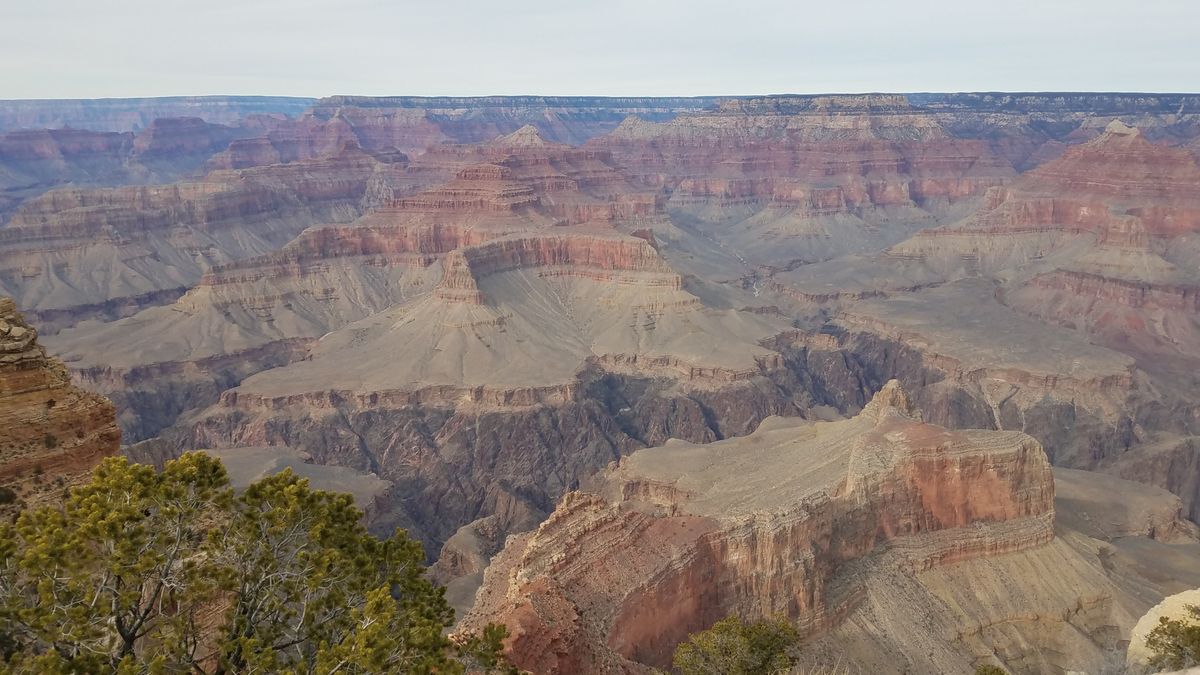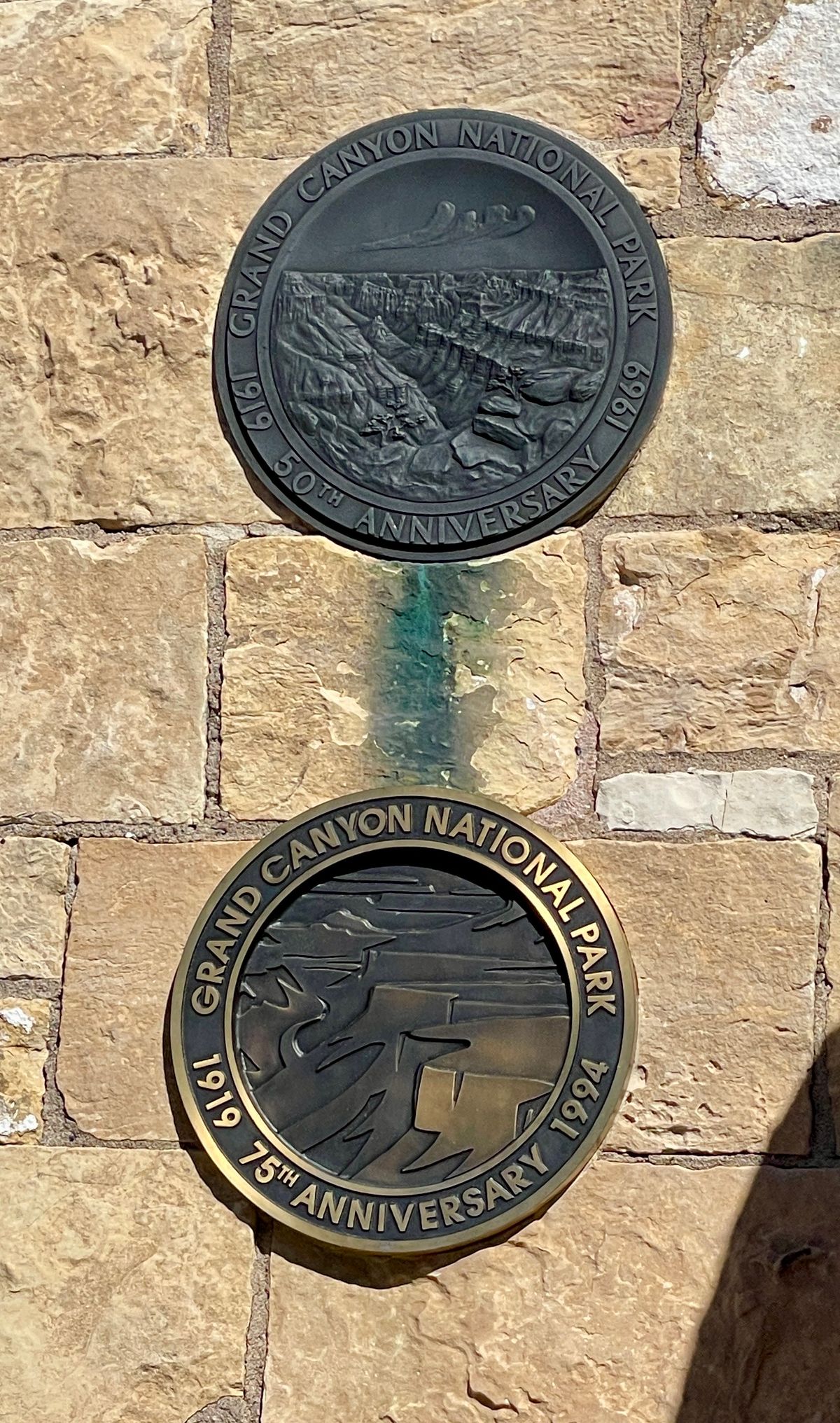About
On August 30, 1869, Major John Wesley Powell and five companions brought their rowboats ashore at St. Thomas, Nevada. Having departed from Green River, Wyoming, with nine men three months earlier, Powell and his crew became the first white people confirmed to have traveled through the entirety of the Grand Canyon.
Powell grew up in rural Illinois and had a largely self-taught education. As a young man, he frequently set off on journeys to satisfy his own need for adventure, including spending four months walking across the state of Wisconsin and rowing a boat down the Mississippi River from Minnesota to the Gulf of Mexico. In part because of these exploits, when he was 25 years old he was admitted to the Illinois Natural History Society and began taking classes at Oberlin College. His studies were interrupted by the American Civil War, however, and he dropped out of school and enlisted in the Union Army.
Powell was initially put to work scouting and creating maps, but was eventually promoted to leading artillery brigades. During the Battle of Shiloh, a bullet hit his right arm, requiring most of it to be amputated. Despite this, he returned to military service for the rest of the war, earning the rank of Lieutenant Colonel. After the war, Powell accepted a position as professor of geology at Illinois Wesleyan University, but soon found a new calling in the exploration and mapping of the American West.
After proving his capability with several smaller surveys in the Rocky Mountains, Powell was able to convince the Smithsonian Institute and the United States Army to provide material support to a much more ambitious project, the mapping and geological study of the Green and Colorado Rivers, including the Grand Canyon. Powell recruited a team of frontiersmen, Civil War veterans, and amateur scientists, and they departed from Green River on May 24, 1869, in four wooden rowboats.
The Powell Expedition of 1869 was fraught with perils. Only a few days into the journey, one of the four rowboats capsized and many supplies were lost. Also early on in the trip, Englishman Frank Goodman, who traveled to the American West seeking a thrilling adventure and paid to join the expedition, decided that he had had enough and simply left, settling down and spending the rest of his life in nearby Vernal, Utah.
The river rapids provided most of the hurdles along their way. As they ventured, Powell would attempt to judge whether it was better to try and run them, which was risky and could easily result in the injury of men and the loss of supplies, or to pull the boats ashore and carry everything downriver to a safer point, which was tedious and tiring work. Having already lost one of his four boats, Powell frequently erred on the side of caution and ordered everything carried around the troublesome parts of the river. This greatly slowed their progress and required them to ration food.
On August 28th, three other men decided to leave the expedition, thinking the journey impossible and that they would soon run out of supplies and starve if they stayed on the river. Powell gave them some guns and food and continued without them. The three who stayed behind climbed out of the Grand Canyon but were never heard from again.
Only two days after the three men chose to abandon the journey, Powell and his remaining crew emerged from the canyon and reached their endpoint, becoming the first confirmed white people to have traveled the entirety of Grand Canyon. Powell became an overnight celebrity. In 1871, he set out on a second expedition that retraced the steps of the first one, this time bringing along more scientific instruments and a photographer. In 1875 he published a popular book recounting the two expeditions, which is still in print today.
In 1881, Powell was appointed director of the U.S. Geological Survey, where he advocated for a cautious and low-density settlement of the West due to its arid landscape, a view that was opposed by business leaders who were pushing for westward expansion and mass settlement in order to make a profit. History and further scientific study would later show that Powell's position was the correct one.
In 1912, a decade after his death, a memorial to John Wesley Powell was constructed on the rim of the canyon. A plaque on the memorial also lists the names of the members of his two expeditions, although the names of those who abandoned it were intentionally left off. Five years later, in 1919, the Grand Canyon was designated a U.S. National Park.
Related Tags
Know Before You Go
The Powell Memorial is located at Powell Point, on the south rim of the Grand Canyon. During the winter, private vehicles are allowed on Hermit Road, which is the access road to Powell Point, but for most of the year you must take the free Hermit Route shuttle bus that departs from Grand Canyon Village.
Community Contributors
Added By
Published
December 24, 2018
